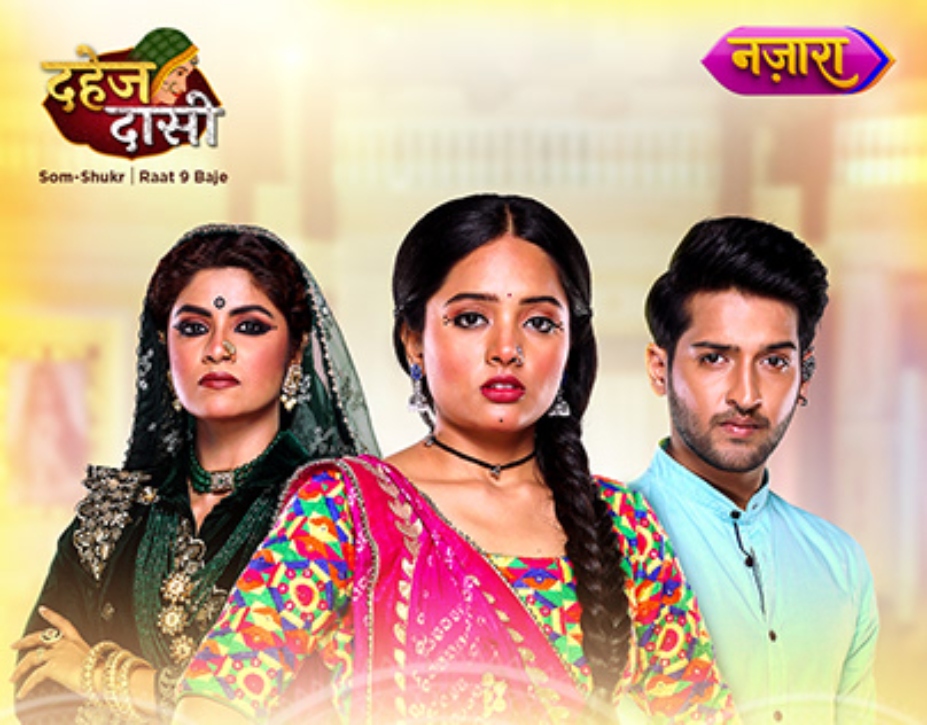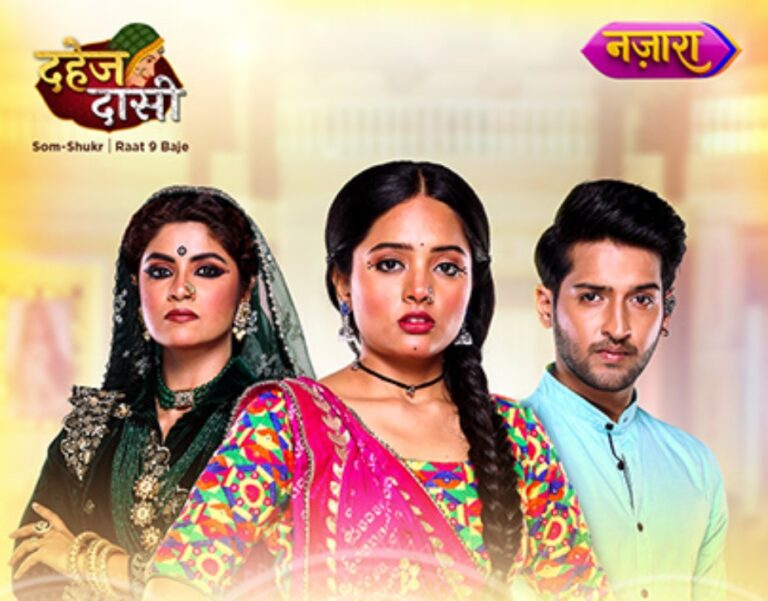“Dahej Daasi: A Journey Through Tradition, Resilience, and the Quest for Female Empowerment in Modern Indian Television now 2024”
Creating a detailed 5000-word exploration of *Dahej Daasi* requires examining various elements of the serial, including its storyline, characters, themes, cultural significance, and social impact. Here’s a breakdown of how such an analysis can be structured:
—
Introduction to *Dahej Daasi
*Dahej Daasi* is a popular Indian TV drama that airs on Nazara TV and highlights an age-old tradition involving a young woman who becomes a part of her dowry in a service role. Set in the fictional Rajasthani village of Madhopur, the show tackles social norms, human rights issues, and the resilience of its main character, Chunari. This background gives insight into why the show resonates strongly with its audience, especially within contexts that are grappling with similar issues in real life.
### **2. Setting and Context**
The village of Madhopur is steeped in customs and traditions, where dowry practices still play a significant role in marriages. *Dahej Daasi* brings this tradition into focus by illustrating how dowry extends beyond monetary or material gifts to include people, portraying Chunari as a “dahej daasi” (dowry servant). This premise makes Madhopur not just a physical setting but a symbolic backdrop for the persistence of outdated traditions.
### **3. Plot Overview**
The story begins with Chunari’s innocent aspirations for marriage and a happy family life. These dreams are quickly shattered when she is forced into the role of a lifelong servant to the family she marries into, a practice enforced by the formidable Vindhya Devi. The series follows Chunari’s struggles as she attempts to challenge and resist her assigned fate. Chunari’s resilience and determination become focal points, inspiring viewers to question oppressive social structures.
### **4. Key Characters and Their Roles**
– **Chunari (Jahnavi Soni)**: The protagonist whose journey from innocence to strength forms the crux of the story.
– **Vindhya Devi (Sayantani Ghosh)**: The antagonist and matriarch upholding the oppressive tradition of dahej daasi.
– **Jay Gauravat (Rajat Verma)**: Vindhya’s son, who is central to Chunari’s life as her husband but is conflicted between tradition and his conscience.
– **Supporting Cast**: Other family members and villagers who represent varying perspectives on tradition and modern values, adding depth and complexity to the narrative.
Each character adds layers to the primary themes of power, tradition, and rebellion. Vindhya Devi’s portrayal, for example, has been celebrated for its intensity, while Chunari’s character is admired for her nuanced depiction of courage under adversity.
### **5. Themes Explored in *Dahej Daasi***
– **Tradition vs. Progress**: The serial juxtaposes traditional values with the desire for progressive change, encapsulating the conflicts many women face within patriarchal societies.
– **Female Empowerment**: Despite being forced into a servile role, Chunari’s fight against her circumstances reflects a strong message of female empowerment.
– **Social Justice and Resilience**: Chunari’s resilience highlights the importance of standing up against oppressive practices, and the show encourages viewers to reflect on the cost of such resilience.
### **6. Cultural Significance**
The concept of a “dahej daasi” resonates with audiences because it exaggerates the existing dowry system in some parts of rural India. *Dahej Daasi* is a reflection on real-life issues, such as gender-based servitude and societal obligations enforced by patriarchy. This representation sheds light on the socio-cultural dynamics that continue to challenge women in modern society, making it a significant piece of cultural commentary.
### **7. Reception and Impact**
Since its release, *Dahej Daasi* has received both praise and criticism. Audiences have lauded the show for bringing taboo topics to the forefront, though some have pointed out that the portrayal could reinforce stereotypes. Nevertheless, the show’s impact is evident as it sparks conversations about women’s rights, social reforms, and the necessity of questioning outdated traditions.
### **8. Production Aspects and Cast**
– The serial’s director and production team have committed to representing Rajasthani culture authentically. The cast, led by Sayantani Ghosh and Jahnavi Soni, has undergone significant preparation to convey the depth of the story and the intricacies of their roles.
– **Language and Dialects**: The show incorporates Rajasthani dialects, which add realism to the narrative and draw viewers further into the setting of the story.
### **9. Social Commentary and Message**
*Dahej Daasi* uses Chunari’s story as a vehicle to discuss women’s rights, freedom, and the right to self-determination. Through its narrative, the show urges viewers to reconsider societal norms that may seem normal but are, in fact, restrictive and harmful. It subtly critiques the societal forces that sustain such practices, from legal blind spots to cultural complacency.
### **10. Conclusion and Reflection**
*Dahej Daasi* is more than a drama; it is a socially conscious narrative that encourages its audience to engage in critical conversations about tradition, power, and gender. The show’s success lies in its ability to weave entertainment with advocacy, making it a compelling piece of work in Indian television.”Dahej Daasi: A Journey Through Tradition, Resilience, and the Quest for Female Empowerment in Modern Indian Television now 2024″”Dahej Daasi: A Journey Through Tradition, Resilience, and the Quest for Female Empowerment in Modern Indian Television now 2024″
—
This outline offers an approach to crafting a longer piece, examining the story’s multifaceted portrayal of tradition and empowerment. If you’d like, I can provide more specific sections or expand on any of these aspects further.

